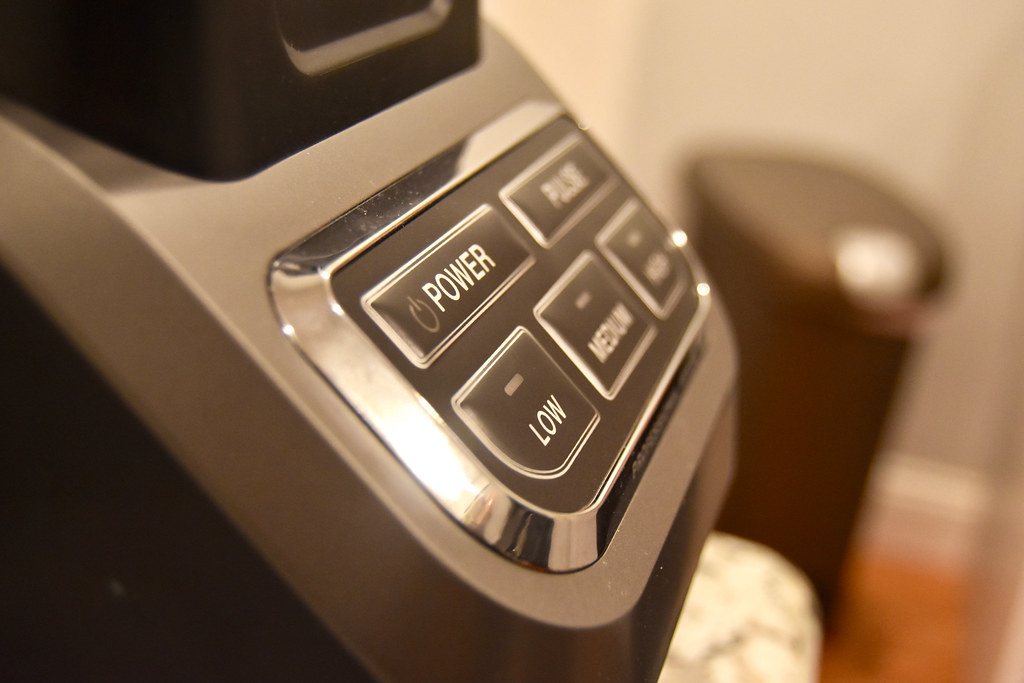For many people, the Ninja blender has become a necessity in the kitchen because of its remarkable blending ability and adaptability. It seamlessly converts items into delicious dishes, from soups to smoothies. However, people frequently enquire as to whether it is safe to blend hot food in a Ninja blender.
You can use a Ninja blender with hot food. Although Ninja blenders are made to withstand a broad variety of temperatures, there are a few things to keep in mind to maintain safety and guard against blender damage.
First of all, when combining hot food, extreme caution is required. Hot liquids can increase the pressure of steam inside the blender, which can cause the lid to come off or the contents to splatter. It is advised to use an oven mitt or towel to firmly hold the cover in place while blending in order to prevent this. To avoid any unexpected surges, it’s also a good idea to start mixing at a moderate speed and gradually raise it.
Additionally, it’s crucial to remove the centre cap or, if a vented lid is available, use it to avoid steam accumulation and lid release. This lessens the possibility of any accidents by allowing steam to escape when blending.
Furthermore, it’s essential to make sure that the hot food doesn’t fill the blender jar to its maximum capacity. It’s preferable to combine in smaller batches if necessary because overfilling can result in leaks or spills.
Last but not least, always use caution when handling hot liquids and watch out for steam burns. To lower the possibility of an accident, let the hot food cool slightly before blending.

What is the maximum temperature that a Ninja blender can handle?
Depending on the model and the materials used in manufacture, a Ninja blender’s maximum operating temperature may change. The recommended maximum temperature for your particular model should be found in the user manual or manufacturer’s instructions, even though Ninja blenders are typically made to handle hot liquids and ingredients.
As a general rule, most Ninja blenders can withstand temperatures up to about 180°F (82°C) without any problems. To prevent any potential mishaps or damage, it’s crucial to proceed carefully and add hot liquids to the blender one at a time.
If you frequently work with really hot ingredients, it could be wise to think about a blender made for high-temperature blending or to speak with the manufacturer to be sure it is compatible with your intended use.
Are there any specific Ninja blender models that are designed for blending hot food?
Yes, Ninja has speciality blender versions that are made to deal with hot food and drinks better. The Ninja Chef High-Speed Blender (CT800 series) is one such type, and it has a robust construction that is ideal for blending hot substances. It has a strong motor, a durable pitcher, and a vented lid so that steam can securely escape.
The Ninja Foodi Cold & Hot Blender (HB150 series) is another type that can handle blending hot food. With a heat-resistant pitcher and an integrated heating element, this blender can mix and reheat soups, sauces, and other hot recipes. It is made to handle both cold and hot components.
These particular models include extra security features, the ability to handle hot food, and performance guarantees. To guarantee safe and appropriate use with hot ingredients, it’s crucial to consistently refer to the user handbook and follow the manufacturer’s recommendations for your specific Ninja blender model.

Can most blenders process hot food or is it only Ninja blenders?
The majority of blenders, including ones from different brands, can process hot food. Many other blender models on the market can handle hot ingredients, yet Ninja blenders are renowned for their prowess in this area.
There are a few important things to take into account when choosing a blender to prepare hot food:
- Look for blenders that are especially made to handle hot ingredients if you need heat resistance. These blenders frequently include heat-resistant materials and parts, such as glass or BPA-free plastic pitchers that can withstand high temperatures.
- Make sure the blender has a strong motor and a variety of speed levels. Higher blending speeds may be necessary when processing hot food to provide smooth results.
- Look for safety features like vented lids or release valves that let steam out while blending to lower the danger of accidents.
- Manufacturer recommendations: Always refer to the manufacturer’s instructions or the user handbook for the particular blender model you are thinking about buying. They will detail any special guidelines for blending hot food as well as the suggested maximum temperature for the blender.
While Vitamix, Blendtec, KitchenAid, and Breville are respected blender companies that also provide models ideal for processing hot food, Ninja blenders are well-known for their adaptability with hot ingredients. Make careful to investigate and contrast several blender models to pick one that meets your requirements and has a good reputation for blending hot ingredients.
No matter which blender you use, always remember to follow safety precautions, handle hot liquids with caution, and add hot ingredients gradually to prevent mishaps or blender damage.
Relevant Articles
How To Clean The Rubber Gasket In A Ninja Blender?

Comments are closed